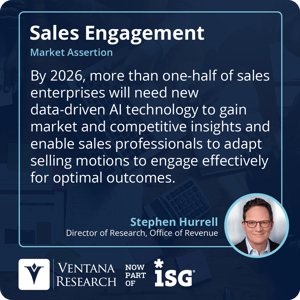Sales and revenue operations teams have for the most part traditionally relied on CRMs for information relating to leads and opportunities. For inside sales (sometimes referred to as high-velocity sales) as well as field sales, relevant product, pricing and customer have been loaded or entered into the CRM to be accessed via reports, dashboards or spreadsheets. For inside sales teams, dialers with prioritized seek lists were an additional need. Yet traditional CRM software providers were lacking in necessary functionality., Major contact center providers were more focused on large scale inbound calling around case management rather than outbound lead development.
In the mid 2010s a series of software providers emerged who had developed new offerings for these underserviced areas. Some providers developed add-ons for CRM dialer applications, pulling leads from the CRM and utilizing rules or predictive AI to prioritize seek lists and recommendations of when to call. Other providers focused on conversation analytics, to enhance call coaching, analyzing voice calls for insights on tone, key phrases and mention of competitors and using the results in call coaching. Additional providers focused on pipeline management, sales analytics, and forecasting, again pulling, and copying the data from the underlying CRM.
From a role and persona point of view, the pandemic increased the number of field sales workers selling remotely and accelerated the trend for inside sales workers to manage higher-value deals. I wrote about this convergence of roles in The Art and Science of Sales from the Inside Out. It is one of the driving forces behind the market consolidation, as each category of software providers acquires smaller providers in the adjacent categories. This has lead to a number of software providers - sometime referred to as revenue or sales engagement platforms – that offer lead tracking, dialer, conversation intelligence, pipeline management and forecasting.
Many of these category founding applications were also some of the innovators when it came to utilizing the first round of artificial intelligence, predictive AI, using machine learning to discern patterns of behavior that could be used to determine which activities or what progressions were predictors of success, whether a successful call or a closed won opportunity. The source data for these applications was a CRM, and then copied and stored in a specialist time aware data store or aggregated and anonymized across customers. As I wrote about in the Future of CRM has Sales Engagement Potential the CRM providers have invested heavily in developing similar capabilities to embed within the core. These providers are at the forefront of incorporating AI large language models and generative AI (GenAI) integration. In many ways, CRM providers are using GenAI to leapfrog some of the sales engagement providers by incorporating personal assistant capabilities such as note and chat transcript summarization to make the actual sellers’ tasks easier. This contrasts with the functionality deployed using early predictive AI designed predominately designed for management.
CRM providers integration with marketing and account data also increases the potential for sales to self-source opportunities through tight integration with account segmentation, where GenAI shows much promise. And it is not just the CRM vendors, some of the unified communication (UCAAS) and call center as a service provider (CCAAS) are also offering high volume outbound and lead generation capabilities using technology used for inbound and service calls.
The importance of getting this right should not be underestimated as we believe that by 2026, more than one-half of sales enterprises will need new data-driven AI technology to gain market and competitive insights and enable sales professionals to adapt selling motions to engage effectively for optimal outcomes.
market and competitive insights and enable sales professionals to adapt selling motions to engage effectively for optimal outcomes.
Dependence on the CRM for data poses the question as to whether there is any real need for sales engagement applications if the major CRM vendors are catching up with functionality or - in the case of GenAI - surpassing them? As in most things, the answer is, it depends.
When it comes to insights and reporting, are you limited to views that are tied to what exists in the source CRM, or can you create local views and alternate ways to look at the data? Being able to track activities like calls and emails that could convert a lead to an opportunity and how these opportunities progress is a vital part of understanding what “good” look like. Time aware data stores assist in this measurement, as it is very important to preserve events and activities as they happen, rather than only storing the status of the last event. Managing and measuring sales activities that are needed to move leads to close is, for many sales leaders, the most critical aspect of understanding whether targets will be met and to ensure the basic groundwork is being undertaken. When it comes to functionality related to the role, look carefully to ensure the functionality is not principally for managers and operations, but also helps sellers. Seller functionality could be digital deal rooms, AI assisted summarization and automatic capture of calls, emails, texts and calendar events.
Lastly, large enterprises with more than one CRM system may find a sales and revenue engagement application appropriate for an aggregate view. Ensure the application will be able to store the subsidiary detail as well or have an ability to query the detail in the source CRM.
Regards,
Stephen Hurrell


 market and competitive insights and enable sales professionals to adapt selling motions to engage effectively for optimal outcomes.
market and competitive insights and enable sales professionals to adapt selling motions to engage effectively for optimal outcomes.








